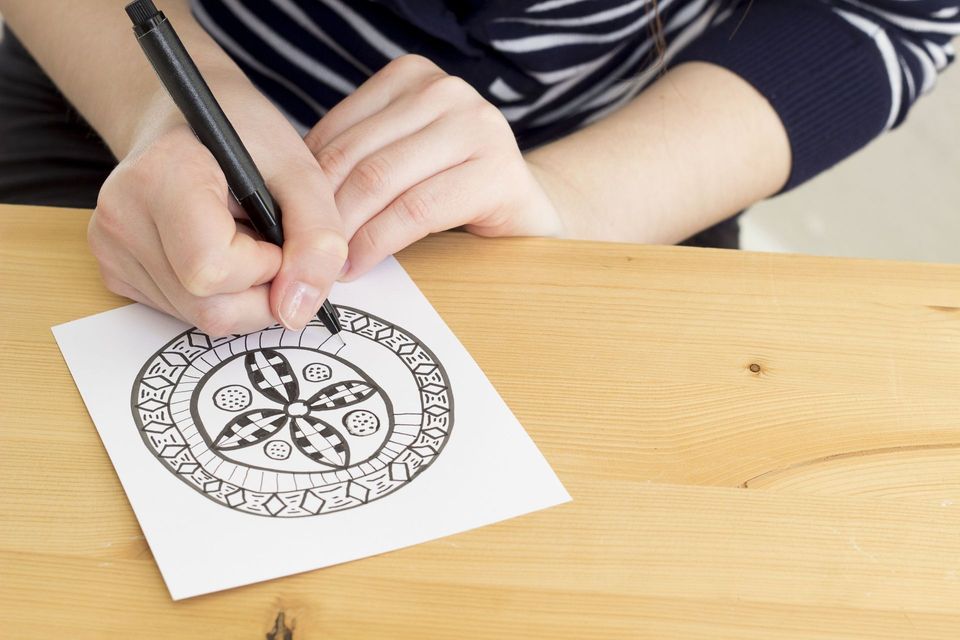How drawing can strengthen memory
February 26, 2020
Why do we remember better when we put pen to paper?
People are always looking for more effective ways to retain information. It’s the challenge of every student studying for their next exam, and every designer visualizing their next project.
A notebook and pen have traditionally been the golden standard for taking down important information. But since the introduction of laptops, tablets and smart devices into our workplaces and lecture halls, our reliability on pen and paper has fallen to the wayside.
There is evidence
that using a pen allows us to store information to short-term memory more effectively than using other implements, such as a keyboard.
In the same way, our brains are able to better visualise our design projects when we take to sketching before jumping into a digital design suite. While sketching allows us to quickly draft solutions and explore new concepts, there is evidence
that drawing is also an effective method of enhancing one’s memory.

What do our brains do when we write?
Simply listening to a conversation, a lecture or a phone call will activate the part of our brain that processes language. But, while processing new information in the moment, the brain cannot always discern between which information is more or less important – and ultimately which materials should be remembered.
A perfect example of this is the art of courtroom sketching. In previous times, cameras were not allowed in courtrooms. In some jurisdictions it was not allowed to sketch during court and artists had to rely on their memory and notes when depicting the courtroom. These artists were only allowed to take notes during the hearing and had to create their sketches after leaving the courtroom. This an impressive feat of memory, and sheds light on the importance of notes and how sketching can enhance one's memory.
When we engage in the physical act of writing or drawing however, our brain establishes neural links that allow us to connect new ideas and concepts. A brain that is both listening and writing does not necessarily remember more than a brain that is only listening, but it does structure the new information such that it can prioritize and retain key ideas.
But what does this mean in an age where notebooks and pens have been replaced by keyboards and iPad devices? Are we connecting the same cognitive pathways when we transcribe information using a laptop, rather than pen and paper?
Writing can strengthen your memory
It’s no surprise that note-takers can transcribe more words in the same amount of time with a keyboard instead of a pen in hand. But it is substantiated that pen scribblers are more likely to develop a stronger understanding of the content, and to successfully apply and integrate new information ahead of their keyboard tapping peers.
Using a pen helps us to remember important information because in the act of writing or sketching, our brains are actively working to isolate and process key information. It is an act of “mental lifting” that exercises our cognitive processes and forces us to develop a meaningful understanding of the information.
Although pen and paper is the recommended method, keeping track of one’s various documents raises an issue that makes tablets and smartphones a more attractive option. How then, can we marry the processes of writing and drawing with the convenience of current day technologies?
The obvious answer is the stylus pen.
Scriba is a revolutionary digital stylus that is ergonomically designed to comfortably fit your hand and uses unique Squeeze-Motion technology. Order here.
Articles

In the period since COVID forced many of us back home and out of the office, remote work has become the new norm for many. The flexibility of working from home, especially for those with small children, is very compelling, but making a productive workspace is more than setting up a desk in the spare room. More people are seeking to create functional and comfortable workspaces in their homes, however, it can be difficult to strike the right balance between a professional office space and a cosy home environment. Here are some tips for designing a home workspace that meets both of these needs: Dedicate a specific area for work Designating a specific area for work is essential for separating work from leisure time. This could be a separate room or just a corner of a room. It is important to make sure that the workspace is free from distractions and clutter, as this will help you stay focused and productive. Choose the right furniture Ergonomic furniture is key to a comfortable and productive workspace. Invest in a comfortable chair, a desk that is the right height, and a good-quality mouse and keyboard. If you are prone to back pain, consider a standing desk. Add personal touches Just because your workspace should be functional, doesn’t mean it can’t be personal. Add photos, plants, and other personal items to make the space feel like your own. This will help create a sense of comfort and make you feel at home in your workspace. Good lighting Good lighting is essential for a comfortable workspace. If possible, place your desk near a window for natural light. If not, invest in a high-quality desk lamp to provide bright, even light. Keep it organised An organised workspace will help you stay productive and focused. Use desk organisers, filing cabinets, and other tools to keep your work area free from clutter. A clean and organised workspace will also help you start each day with a clear mind. Consider your work style Think about the type of work you do and how you like to work. If you prefer a minimalist workspace, opt for a simple desk and a few basic supplies. If you need space for multiple screens and other technology, make sure you have enough room to work comfortably. Take breaks It’s important to take breaks throughout the day to avoid burnout. Step away from your desk, go for a walk, or do some stretching exercises to clear your mind and recharge.










